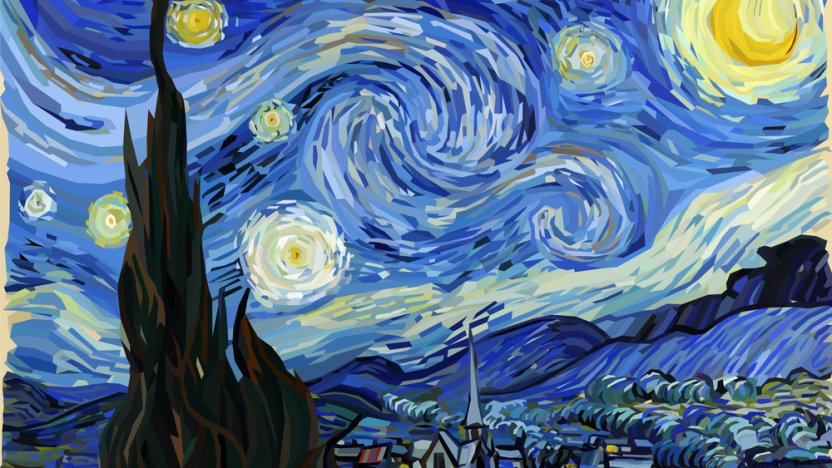The Advancement of Trump Art: From Very Early Reviews to Contemporary Perspectives
The Advancement of Trump Art: From Very Early Reviews to Contemporary Perspectives
Blog Article
Starting a Visual Journey With the Lyrical Interpretations of Nature in Impressionist Landscapes
Each brushstroke, each play of light and darkness, and each shade choice in their jobs speaks quantities regarding the artists' deep link to nature and their capability to equate its beauty onto the canvas. As we discover the lyrical interpretations of nature in Impressionist landscapes, we are welcomed to immerse ourselves in a globe where truth and emotion link, offering a glimpse right into the artists' extensive gratitude for the all-natural globe.
The Exciting Brushstrokes of Claude Monet
Claude Monet's mastery of brushstrokes goes beyond simple strategy, imbuing his landscapes with a heavenly quality that fascinates and mesmerizes visitors - trump art. His ingenious use of shade and light, combined with his distinctive brushwork, produces a feeling of activity and life within his paintings. Monet's distinguished collection of jobs showing water lilies and his famous haystacks display his capability to record the fleeting effects of light and atmosphere

Checking Out Light and Shadow With Camille Pissarro
Symbolizing a comparable reverence for the interplay of light and shadow, Camille Pissarro's artistic vision unfolds as a harmonious exploration of the environment's luminous nuances. Pissarro, a vital figure in the Impressionist motion, masterfully recorded the dynamic connection in between light and shadow in his landscapes. His experienced usage of color and brushwork permitted him to share the subtle changes in light that specify various times of day and periods.
Pissarro's paintings commonly feature dappled sunlight infiltrating leaves, casting elaborate patterns of light and shadow on the planet below. In works such as "Hoar Frost, the Impact of Snow, Pontoise," Pissarro skillfully illustrates the crisp illumination of winter season sunlight compared with the amazing darkness that specify the snowy landscape. By welcoming both light and darkness in his make-ups, Pissarro invites viewers to immerse themselves in the all-natural elegance and transient impacts of light in the world around them.

Through Pissarro's works, we are reminded of the transformative power of light and shadow, inviting us to stop briefly and value the short lived minutes of elegance existing in the day-to-day landscapes that border us.
A Symphony of Colors by Edgar Degas
Edgar Degas coordinates a vibrant symphony of shades in his skillful art work, instilling his compositions with a dynamic interplay of hues that captivate the viewer's gaze. Understood mainly for his ballet professional dancers and intimate scenes of Parisian life, Degas adeptly manipulated shades to communicate mood and motion in his paintings. trump art. His use vibrant, contrasting shades and subtle tonal variations created a sense of deepness and vibrancy within his jobs
Degas' shade palette usually was composed of abundant blues, deep eco-friendlies, and cozy oranges, which he used with confident brushstrokes to capture the essence of his topics. Whether portraying a ballerina mid-performance or a group of close friends conversing at a cafe, Degas' shades not just portrayed the scene yet also stimulated a feeling of look at this web-site emotion and power.
Additionally, Degas' testing with light and shadow included an extra layer of complexity to his color structures, improving the general environment of his paints (trump art). Via his competent manipulation of color, Degas developed a visual harmony that proceeds to reverberate with visitors today
Discovering Nature's Calmness With Berthe Morisot
Berthe Morisot's creative vision uses a peaceful departure from the vivid color symphonies of Edgar Degas, as she catches the peace of nature in her evocative landscapes. Known for her delicate brushwork and intimate representations of day-to-day life, Morisot's landscapes exude a feeling of peace and harmony.
Morisot's paintings often include soft, low-key tones that share a sense of calmness and serenity. Her jobs, such as "The Cradle" and "Summer season's Day," showcase her capability to capture the refined elegance of nature in such a way that is both calming and reflective to the audience.
Unlike several of her Impressionist counterparts that concentrated on strong colors and vibrant make-ups, Morisot preferred to create gentle, reflective scenes that welcome the viewer to mirror and pause. Via her masterful use light and shadow, Morisot creates a feeling of tranquility that resonates with the customer on a deep psychological level.
The Emotional Landscapes of Vincent Van Gogh
Vincent Van Gogh's landscapes vividly communicate a deepness of feeling with their vibrant brushwork and meaningful use color. The Dutch post-impressionist artist is renowned for his capability to catch intense and raw feelings in his paints, going beyond traditional representations of nature. Van Gogh's tumultuous personal life, marked by psychological health and wellness struggles, considerably influenced his art, infusing his landscapes with a sense of unease, moody, or liveliness.
In works such as "Starry address Night" and "Wheatfield with Crows," Van Gogh's swirling brushstrokes and dynamic color choices stimulate an her explanation extensive emotional reaction from customers. The rough skies and upset landscapes in his paintings show his internal turmoil and emotional turbulence, inviting audiences to explore the complexities of his psyche.
Van Gogh's one-of-a-kind aesthetic language, characterized by overstated viewpoints and vibrant usage of color, creates landscapes that resonate with customers on a deeply psychological degree. Through his art, Van Gogh invites us to see nature not just as an exterior reality yet as a mirror of our innermost feelings and emotions.
Verdict
To conclude, the impressionist landscapes of musicians such as Claude Monet, Camille Pissarro, Edgar Degas, Berthe Morisot, and Vincent Van Gogh provide a captivating and one-of-a-kind aesthetic interpretation of nature. Through their use brushstrokes, emotion, light, and shade, these musicians have created a harmony of images that stimulate a sense of serenity and beauty in the environment. Their jobs remain to motivate and bewitch audiences with their lyrical analyses of the landscapes around us.
Each brushstroke, each play of light and shadow, and each color selection in their works talks quantities about the musicians' deep connection to nature and their capacity to translate its appeal onto the canvas. His cutting-edge use of shade and light, incorporated with his distinctive brushwork, produces a feeling of movement and life within his paintings. His experienced use of color and brushwork enabled him to share the refined changes in light that specify different times of day and seasons.

Report this page